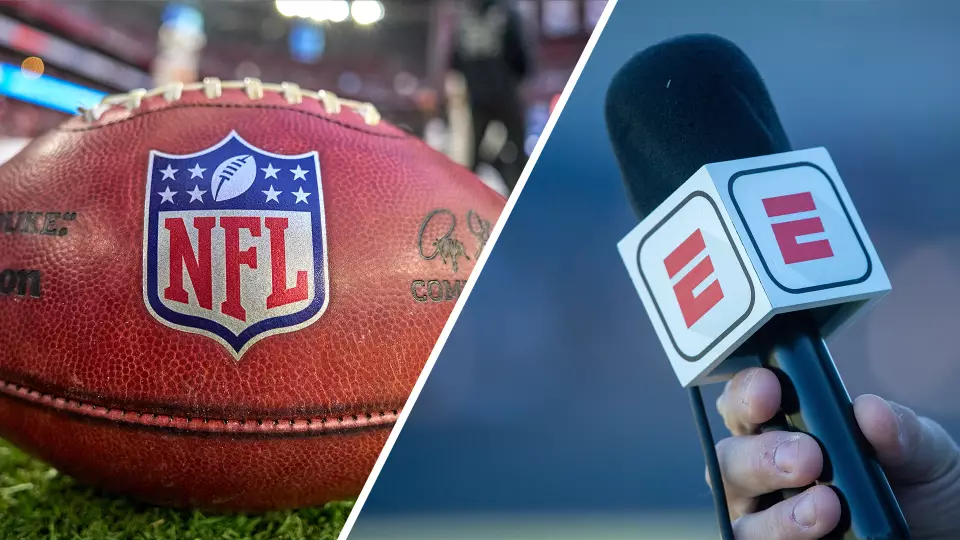The recent acquisition of the NFL Network and associated media assets by ESPN marks a pivotal turning point in sports broadcasting. Historically, the NFL Network has operated as a distinct entity, with a focus on deep dives, exclusive content, and a dedicated audience. By integrating these assets into ESPN’s sprawling media empire, the NFL is moving away from a segmented approach towards a unified, fan-centric ecosystem. This move is not merely about ownership; it signifies a strategic overhaul intended to maximize engagement, leverage technological innovation, and redefine the fan experience.
ESPN’s plan to control both linear and digital rights to the NFL Network illustrates a commitment to convergence. As media consumption habits shift toward streaming and on-demand content, the traditional broadcast model alone can no longer serve the modern football fan. Incorporating NFL Network’s content into ESPN’s upcoming direct-to-consumer platform signals an acknowledgment that future growth lies in digital innovation. This integration aims to make NFL content more accessible, personalized, and interactive, fostering stronger loyalty among viewers who demand seamless access anytime and anywhere.
Enhancing Fan Engagement Through Strategic Content Expansion
A core aspect of this deal lies in expanding ESPN’s coverage and content offerings. Licensing three additional NFL games per season means increased access to live football, with a total of 28 games now within ESPN’s reach. More game coverage undoubtedly translates into greater fan engagement, yet it also presents a challenge: maintaining quality and ensuring the fan experience remains pristine amid expanded access.
The deal’s inclusion of the NFL’s renowned RedZone channel is particularly notable. Guarded as a vital asset for casual and hardcore fans alike, ownership rights to RedZone grant ESPN an exclusive leverage point. This move is as much about control as it is about delivering a better product—by owning the trademark and distribution rights but allowing the league to retain digital rights, the NFL and ESPN can collaborate while maintaining flexibility. This delicate balance indicates that ESPN understands the value of popular content but recognizes the importance of preserving league control over flagship products.
Beyond live games, the agreement to merge NFL’s fantasy product into ESPN Fantasy Football signifies a recognition of modern sports fandom’s interactive nature. Fans are no longer passive spectators; they are deeply engaged participants, obsessed with stats, predictions, and community. By branding ESPN Fantasy Football as the official NFL game, ESPN taps into this enthusiasm, transforming passive viewership into active involvement, thus creating a more immersive football experience.
The Strategic Power Play and Future Outlook
This acquisition serves a dual purpose: it consolidates ESPN’s leadership in sports media and positions the company as the definitive destination for NFL content. In the context of a fiercely competitive streaming landscape, ESPN’s move is bold—an effort to outpace rivals by bundling live games, original programming, and digital innovation under one umbrella. The planned launch of ESPN’s new direct-to-consumer streaming service further bolsters this strategy, providing a platform that can evolve rapidly in response to viewer demands.
The deal also subtly shifts the balance of power in sports media. While the NFL retains ownership of its core assets like NFL Films, NFL.com, and the distribution of some content, ESPN’s expanded footprint guarantees broad exposure and integration into daily sports consumption habits. It cultivates a more unified, accessible, and dynamic ecosystem where fans can seamlessly transition from watching a game to engaging with highlights, podcasts, fantasy leagues, and behind-the-scenes stories—all within ESPN’s digital framework.
On a broader industry level, this move hints at future collaborations: more content shared, rights pooled, and digital strategies synchronized. It signals a future where sports leagues and media giants work more collaboratively to serve fans’ evolving preferences, emphasizing innovation, accessibility, and user experience.
In sum, ESPN’s acquisition of the NFL Network assets is not just an expansion of rights but an audacious leap toward a future where sports media is more integrated, interactive, and fan-centric. It exemplifies how media giants are willing to reimagine traditional models to dominate the digital era—an evolution that promises to reshape how millions experience the game of football for years to come.


Leave a Reply